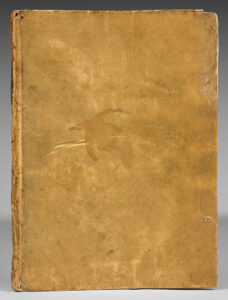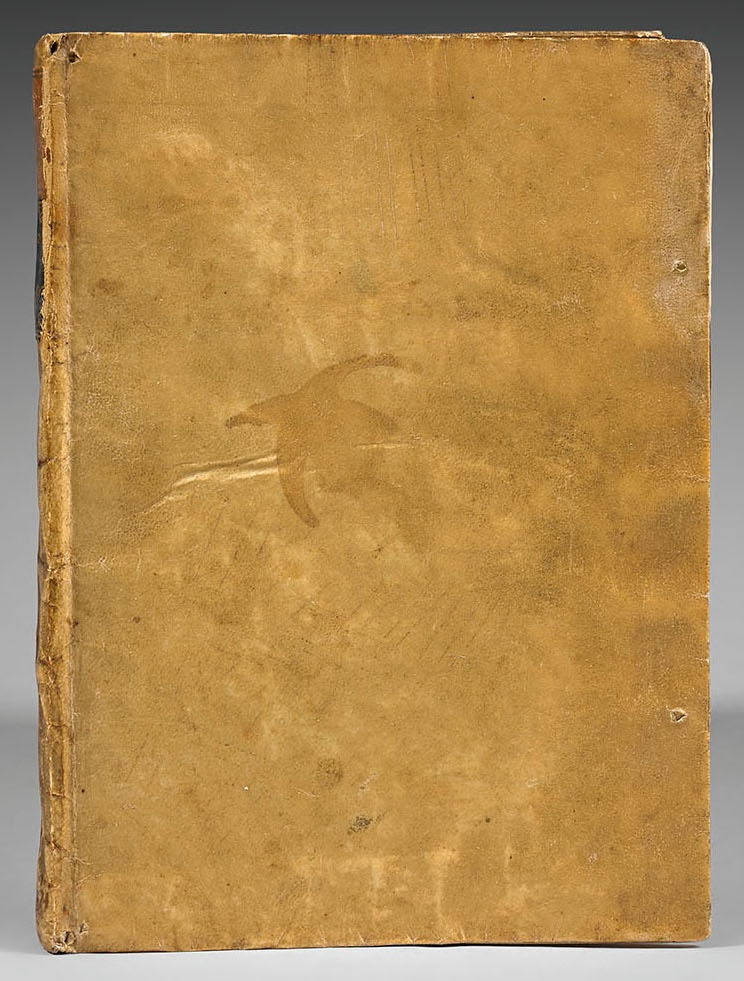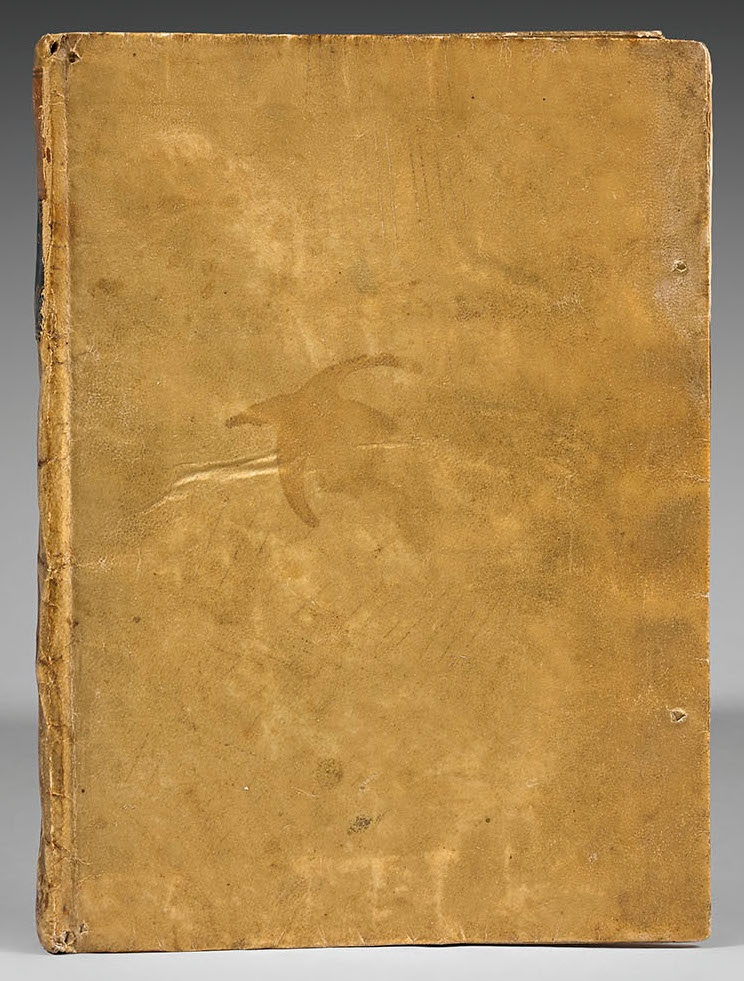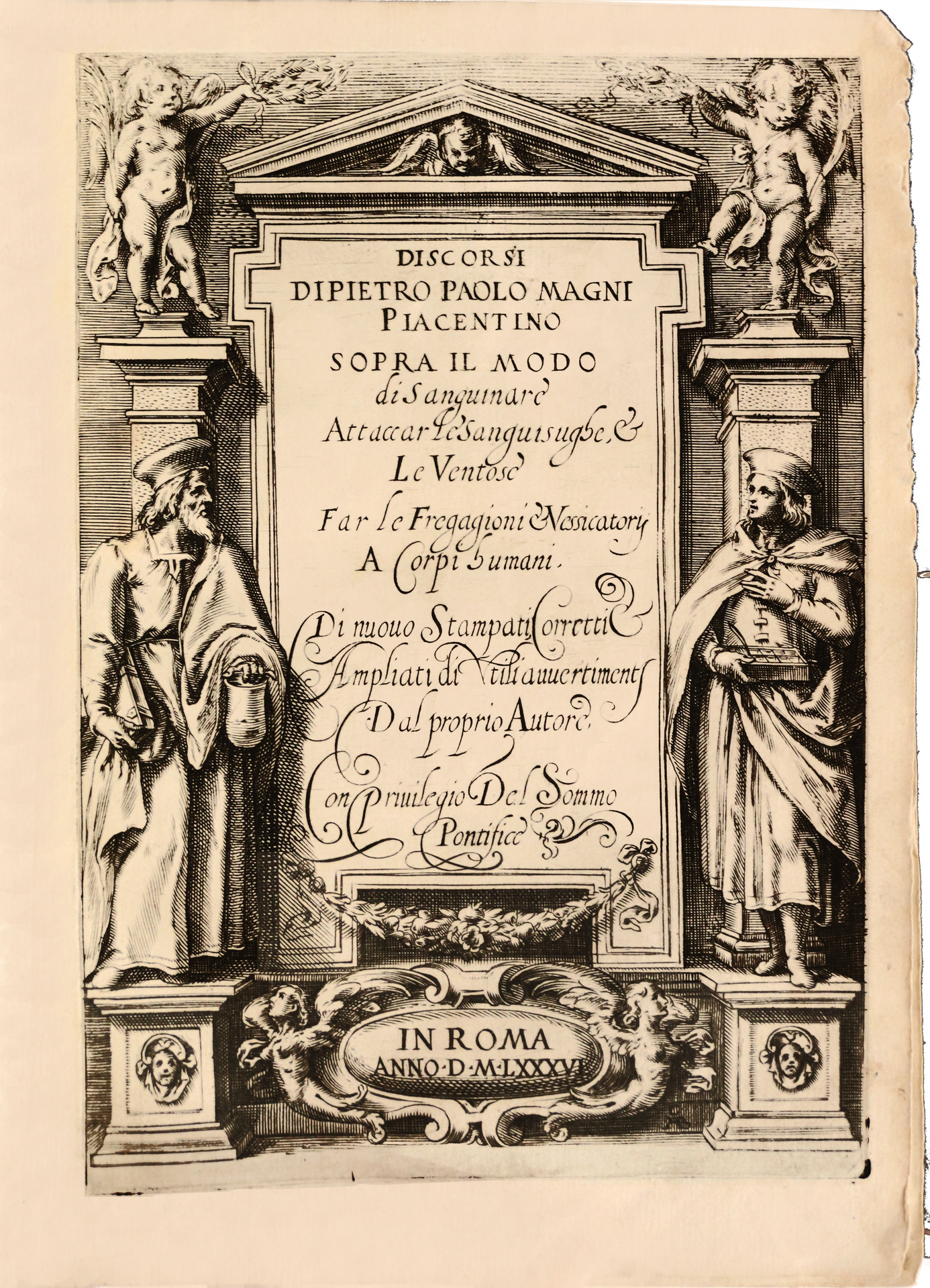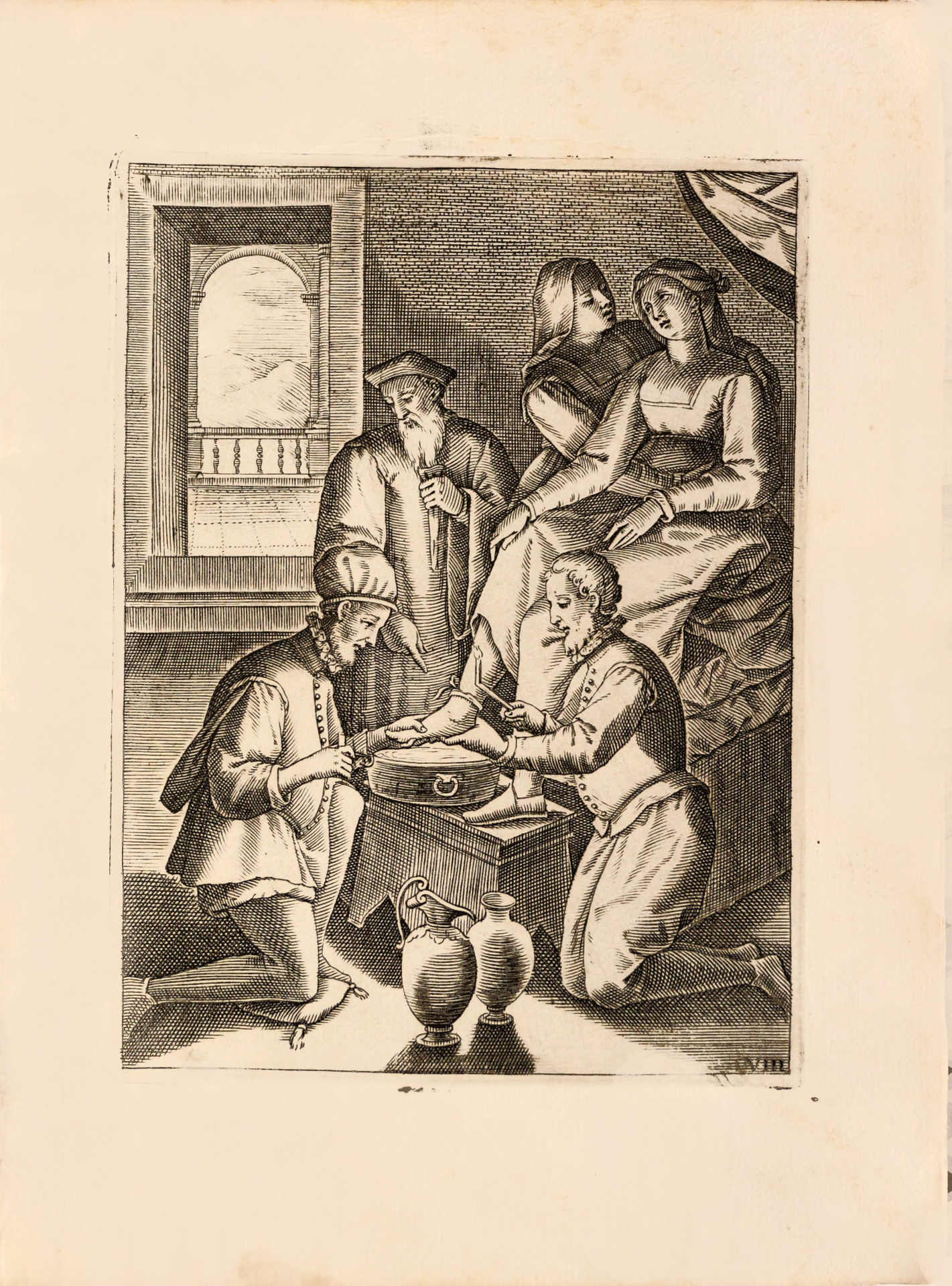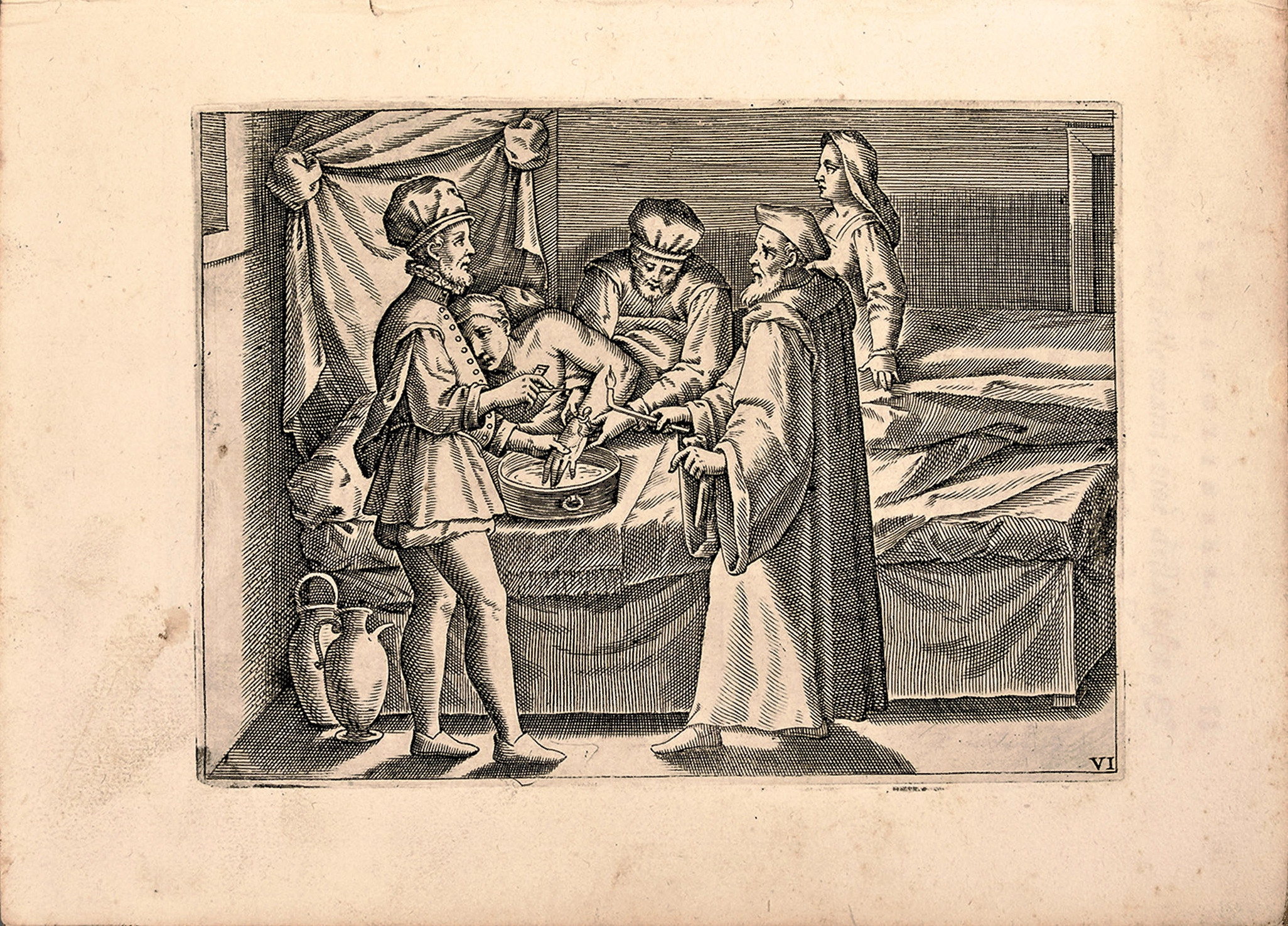Roma, Bartholomeo Bonfadino, 1586.
4to [210 x 154 mm] of (6) ll. including 1 engraved title with an architectural border, 118 pp. including 11 full-page figures, (1) bl.l. Tiny tear in the lower white margin page 93 not touching the text. Contemporary full limp vellum, flat spine, handwritten title on the lower edge. Contemporary binding.
Second edition of this 16th century medical work dedicated to the process of blood-letting, one of the most beautiful illustrated books from the Roman Renaissance.
Mortimer, Italian, 267; Graesse, IV, 338.
The illustration is composed of an architectural frame on the title and 11 full-page engravings. The title engraving bears Cherubino Alberti’s monogram.
The first engraving presents the points for the blood-letting noted on the human body. The 10 following plates illustrate the process for blood-letting in several circumstances. These illustrations appear for the first time in the first edition published in Rome two years before, in 1584.
Brunet (III, 1289), who doesn’t seem to know the 1584 edition, highlights: “Curious work. The 1586 edition is sought-after because it contains the first proofs of the engravings”.
« Pietro Paolo Magni, surgeon, was born in 1525 in Plaisance. Employed in armies, he was in 1551 in Piedmont and in 1571 in Spain. Later, he settled in Rome, and we know that he practised his art in 1586, with a certain reputation. He was, moreover, a good man, great supporter of blood-letting and leeches, but very submitted to doctors, from who he blindly followed prescriptions. He only used one lancet, and he cared in making an opening large enough so blood can flow easily. His main work is entitled ‘Discorsi sopra il modo di sanguinar, attacar le sanguisughe, le ventose, le fregazioni ed i vesicatori al corpo umano’. This treatise on blood-letting was successful in Italy, as we can see from the multiple reprints made until the middle of the 17th century. […].
This work has always been useful for the history of art, and it is sough-after by curious people that prefer old editions, because the plates were not subtracted ».
(Biographie universelle, 26, p.45).
A fine copy, complete with all its plates and preserved in its pure contemporary vellum binding.
See less information
